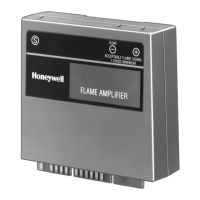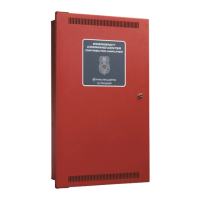
Do you have a question about the Honeywell BENDIX KING KMA 28 and is the answer not in the manual?
| Type | Audio Panel |
|---|---|
| Number of Comms | 2 |
| Number of Navs | 2 |
| Marker Beacon Receiver | Yes |
| Intercom | Yes |
| Intercom Stations | 6 |
| Pilot Isolate | Yes |
| Split Comm | Yes |
| Mount | Panel Mount |
| Voltage | 14/28 VDC |
| Power Supply | 14V DC |
Overview of the KMA 28's role in cockpit audio and intercommunications.
Manual provides detailed installation and operation instructions for the Honeywell KMA 28 system.
Details the KMA 28's features including VOX intercom, receiver switching, and audio interface capabilities.
Outlines TSO approvals, JTSO approvals, and compliance with RTCA DO-160C environmental standards.
Lists technical specifications, TSO compliance, environmental qualifications, dimensions, and power requirements.
Lists the KMA 28 unit and all parts included in the installation kit, with part numbers.
Lists necessary components for installation not provided with the KMA 28 unit.
States that no specific licenses are required for the operation of this equipment.
Covers manual scope, certification requirements for aircraft installation, and preliminary inspection.
Guide for inspecting the unit and supplied parts for damage or missing items before installation.
Details procedures for mounting, cooling, connector assembly, and rack installation of the KMA 28.
Covers wiring harness assembly, MIL-SPEC requirements, noise considerations, and specific connection details.
Instructions for installing the marker beacon receiver, sense output, and external lights.
Describes factory-set adjustments and installer options to tailor specific unit functions.
Recommendations for antenna placement to minimize radio interference in Split Mode.
Information on interfacing the KMA 28 with wireless units like AirCell, including hook switch installation.
Provides detailed pin assignments for both the J1 (bottom) and J2 (top) connectors for wiring.
Outlines steps for verifying power, ground connections, and system functionality after installation.
Guides the physical installation of the KMA 28 unit into its mounting rack, including securing the unit.
Checks the dial tone and overall functionality of the cellular interface when the system is installed.
Final checks on wiring, controls, and aircraft documentation to ensure a complete and safe installation.
Explains how to select receiver audio sources using push-button switches and their functions.
Describes how the power switch functions and the emergency mode connection to COM 1.
Details the microphone selector switch functions for COM 1, COM 2, COM 3, and TEL modes.
Covers the IntelliVox VOX-Squelch system, volume control, and different intercom modes.
Explains how to use the marker beacon receiver, set sensitivity, and test indicator lamps.
Describes how to use the telephone interface based on the selected intercom mode and hook switch operation.
Guidance for completing FAA Form 337 for the KMA 28 installation, including recommended text.












